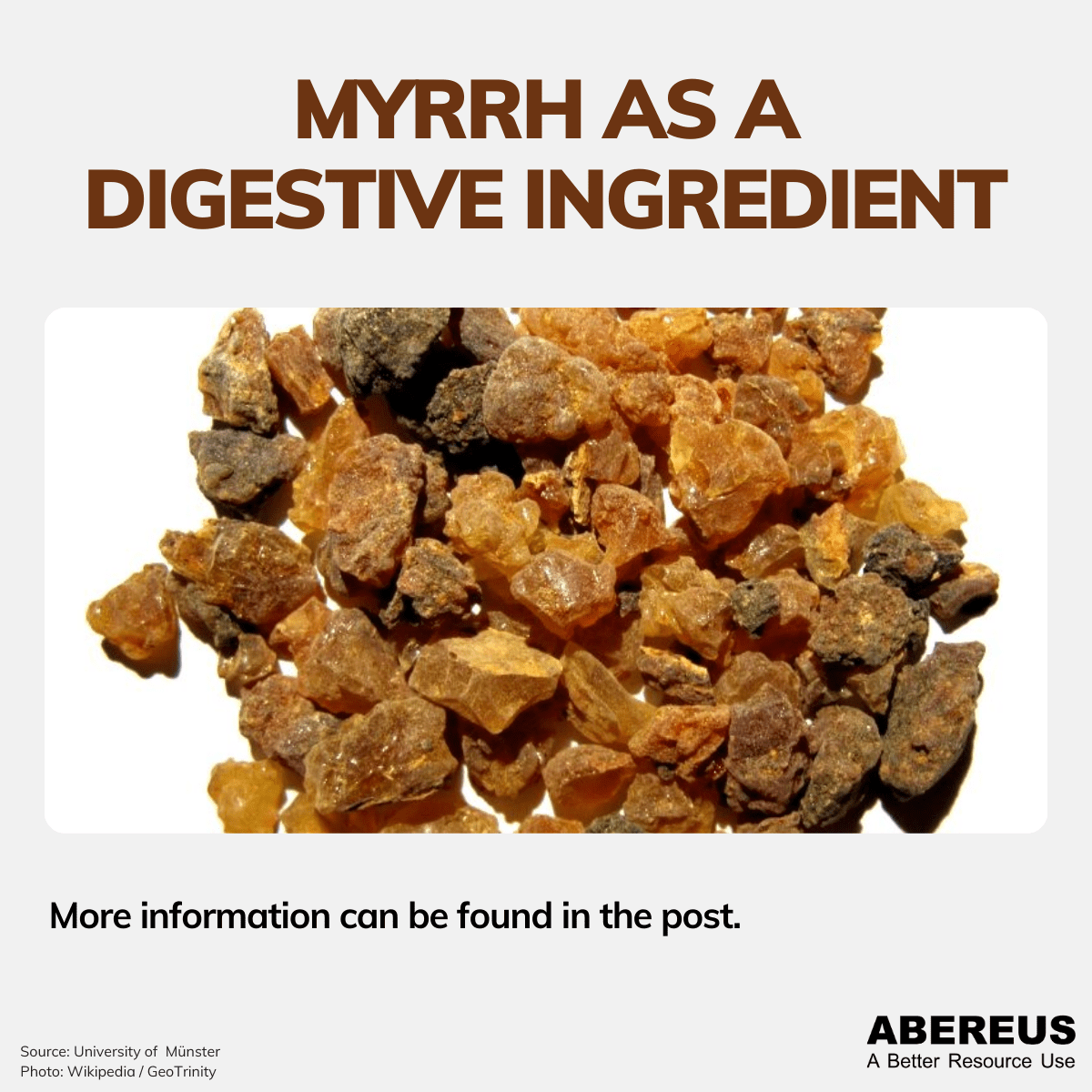Myrrh as a digestive ingredient

Date
According to the bible, the three Magi brought gold, frankincense, and myrrh to the newborn Jesus. While gold is certainly known by most people on the globe and frankincense will be a familiar scent to Catholic church goers, myrrh seems to be the least common of the three.
Myrrh can be collected when the bark of the Commiphora trees is punctured. The tree will secrete a resin which can be harvested and then hardens and it originates in the Middle East and Eastern Africa.
The Egyptians used myrrh to embalm dead bodies and during the plague it was believed to reduce fever. Over the last 2000 years, it has often been described as a helpful drug for digestive diseases. It would be used against strong diarrhea, since the year 60 and Ibn Sina, one of the most highly respected medical doctors of the Medieval Ages, has spoken extensively about using myrrh to sooth stomach aches and reduce flatulence.
Interestingly, Hildegard von Bingen praised more prominently the effect of myrrh against witchcraft before talking about palsies or stomach troubles.
Nowadays, the field of application for myrrh has moved further up in our intestinal tract: for all kinds of inflammations in the oral mucosa, the resin will help thanks to its disinfectant effect on the wound. It will also coagulate the blood and support the healing process. That’s why you will find myrrh oil in many mouthwash or toothpaste products.
While we cannot give any medical advice, we rather celebrate myrrh this week for being chosen as medical plant of the year 2021. In case you don’t have odorless toilets yet, you could also use it as an incense if you care to fill the air with fragrant smoke. Besides, for some people it will be helpful to learn that myrrh has been used as an aphrodisiac for centuries.
Whichever use seems most valuable to you, we invite you to join us and think about a better resource use.
Source: https://www.uni-muenster.de/Chemie.pb/institut/garten/AdJ2021.html



